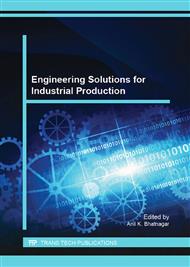p.268
p.274
p.279
p.283
p.287
p.292
p.301
p.307
p.314
Research on the Compatibility of Cement-Based Biomass Materials Modified by Early-Strength Agents
Abstract:
Aim at the slow and complicated hydration process of straw-cement mixed system and the retarding coagulation of cement-based biomass material in C3S reaction. To investigate the improving effect of early-strength agents on the hydration process of straw-cement mixed system by adding CaCl2, FeCl3 and Al2(SO4)3 which could increase the release of hydration heat, accelerate the hydration of cement and weaken the retarding effect of dissolved substances from straw. By testing the variation of temperatures in hydration process to analyze the highest hydration temperature (Tmax), the time of reaching the highest hydration temperature (t), the maximum temperature difference (△T) and the compatibility coefficients (CA) of cement-based biomass materials with modified agents and with no modified agents, and evaluate the compatibility of straw-cement mixed system. Experimental results show that Tmax, t and △T these indexes can intuitively reflect the changing characteristics of early hydration heat of cement-based biomass materials, while CA could reflect the early hydration behavior comprehensively and objectively. Meanwhile, when the dosage of early-strength agents is between 3%~8%, the growth of CA shows as follows: CaCl2 is the best, and FeCl3 is better than Al2(SO4)3.
Info:
Periodical:
Pages:
287-291
Citation:
Online since:
July 2015
Authors:
Price:
Сopyright:
© 2015 Trans Tech Publications Ltd. All Rights Reserved
Share:
Citation:


